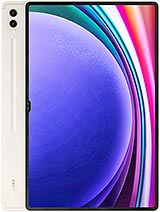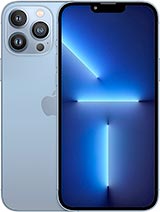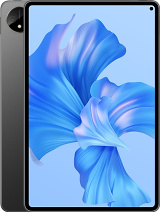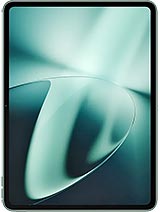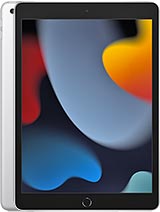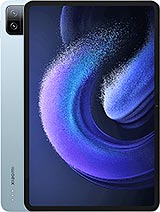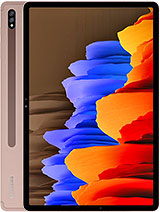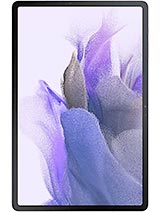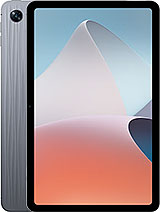Samsung Galaxy Tab S9 Ultra review

Android 13 and One UI 5.1 with DeX mode
The Galaxy Tab S9 Ultra boots Android 13 with One UI 5.1 at launch. The interface supports tablet and DeX mode, and you can easily switch between those two anytime.

The S9 Ultra defaults to its tablet view by default. Unless you manually switch to desktop (DeX) mode, this is how you will use the slate. There are a couple of major differences between tablet and desktop view - the interface and icon scaling; the homescreen look and behavior, and how multi-tasking is done.
Tablet View
So, the One UI tablet view is basically an enlarged version of the One UI we've all seen on the most recent Galaxy smartphones. Let's take a peek.

The basics of the UI are the same as on any other Samsung rocking One UI 5. You populate homescreen pages with apps, folders, and widgets; there is an app drawer, too. The leftmost page is the usual Google Feed. The notification area is familiar, too, just unusually large. A new addition from One UI 5 is the dock - it shows favorite and opened apps. You can hide and show it by using the gesture line (tap and hold).




Lockscreen • Homescreen • App Drawer • Notifications
Biometric security on the Galaxy Tab S9 Ultra comes in one of two shapes - fingerprint authentication and facial recognition. Once we thought the optical under-screen fingerprint scanner is an odd feature on the slate, but we have to admit we've grown to like it. It is very fast and accurate as far as these sensors go. Face recognition will offer a more convenient (if not as secure) access to your homescreen, too.
Multi-tasking in the tablet view is done as on the recent Galaxy smartphones - via the Task Switcher. While in the task switcher you just tap on an app icon, and you can choose between Split Screen view and Pop-Up view. Not all apps support pop-up mode, but the majority can do Split Screen view.




Task Switcher • Pop-up view • Split view • Mixed view
Edge panels are present on the Galaxy Tab S9 Ultra, and you can launch quickly various apps in whatever mode - standard, split-screen, pop-up.
And just a quick note before we wrap this part up - while we've used the Tab S9 Ultra mostly in portrait orientation, everything is also optimized and will work in landscape view - from the homescreens, through the setting menus and all the apps we had installed.
DeX (desktop) View
The DeX mode, not to be mistaken with the wireless DeX option, is a desktop-oriented interface for the Galaxy Tab S9 Ultra. You can trigger the DeX view from Settings or the Notification Center. The Samsung logo will appear, and your Android OS will switch from tablet to desktop-friendly mode.

And it is exactly what the name suggests. The Galaxy Tab S9 Ultra is exclusively in landscape mode with Windows-like desktop where you put your apps. The Notification Center with the toggles has moved to the bottom right corner and is easily reachable with your right hand.
There is a taskbar at the bottom, which houses all currently opened apps. Upon transitioning from tablet to DeX and vice versa, your apps will not close, and you will not lose progress. You can choose to auto-hide the task bar if you are not a fan of it always being visible.
The taskbar contains the app drawer and navigation shortcuts on the left, the currently active apps - in the middle, and the status bar (and notification center) - on the right. You also get volume and screenshot shortcuts here.
Right-click functionality is available everywhere across the DeX view, be it the taskbar, desktop, or system apps. You can trigger it with the usual tap and hold, or by a mouse, of course.
When you are in DeX mode, all apps open in window mode and at the top you will have the well familiar trio of __⬜╳. Most of the app windows support native full screen in DeX mode, but even if they don't - the One UI will tell you that, and it will still maximize the app properly in full screen; it may just need to be refreshed. We had no issues with the full-screen option on any app - both compatible (not needing a refresh) and not optimized (needs a relaunch).
You can stack a large number of windows, just like you would normally do on Windows and macOS. You can also snap windows in Split View, just like on Windows.
The Galaxy Tab S9 Ultra supports wireless DeX mode - meaning it does not require the DeX dock to connect to a Smart TV screen or projector anymore. The device in question needs to support Screen Mirroring. Only some TVs support Screen Mirroring, so your mileage will vary, but the rule of thumb is you should be fine with a Samsung or LG HDTVs, and less so with AndroidTV.
Once connected to a TV or monitor, you can continue using your tablet in Table View and have the DeX view on your TV absolutely independent. For example, you can chat on the tablet, while switching slides with the S-Pen on the TV. Neat!
You can also use the tablet as a touchpad (and keyboard when necessary) and control what's on your TV (and thus bring no other accessories with you).
Finally, if you have a Samsung PC, you can use the tablet as a drawing pad or a second to your PC via the Wireless Display support tool. You can also use the Samsung Flow app to exchange files between your Samsung devices by just dragging and dropping them.
S-Pen features
If you are familiar with the S Pen from previous Galaxy Notes, you'd find it easy to use it. As always, there are a couple of new features that come with every new device. The first that springs to mind are the new Air Actions. There is also low-latency support in selected apps.

Playing around the screen with the S-Pen highlights the always-visible S-Pen shortcut. A tap on it will reveal the battery status and some quick actions like Create note, View all notes, Smart Select, Screen write, AR Doodle, PENUP and even Translate. You can add more shortcuts such as Write on Calendar, magnify, Glance, and whatnot, or remove such.





The S-Pen menu • S-Pen Settings
Air Actions with the S-Pen are also available - you can use it to control the tablet from a distance.
Performance and benchmarks
The Samsung Galaxy Tab S9 Ultra is powered by the Snapdragon 8 Gen 2 for Galaxy - it's the originally Samsung-exclusive version with overclocked CPU and GPU that has lately been made available to certain other manufacturers.

This chipset has 1x3.36 GHz Cortex-X3 prime core, 2x2.8 GHz Cortex-A715 heavy hitters, 2x2.8 GHz Cortex-A710 medium cores and 3x2.0 GHz Cortex-A510 power-saving units. The prime Cortex-X3 core is what's faster compared to the regular chipset, where it is clocked at 3.2GHz.
The Adreno 740 GPU is clocked at 719MHz in the Galaxy phones, compared to 680MHz in the regular Snapdragon 8 Gen 2-powered smartphones.
The Tab S9 Ultra uses 12GB or 16GB LPDDR5X RAM and UFS 4.0 storage chips. There are three storage options available - 256GB (ours), 512GB and 1TB.
Let's see some benchmark scores now.
Finally, let's see some stress test results.
The Galaxy Tab S9 Ultra scored 87% of CPU stability, which is an excellent result. Then it posted 60% of GPU stability, which is not that great, but no game would really use the maximum of its GPU for that long.
Overall, the Galaxy Tab S9 Ultra has the best hardware available to the mass market, and its temperature stability is relatively good. The performance is stellar; we never found a game to make the device warm enough to throttle, which is a very good thing.
Reader comments
- Solun1
- 28 Apr 2025
- 0yR
That's literally a laptop computer you potato. People not buying the Tab S9 Ultra missed out on the best tablet of the decade. They justify this by saying the tablet has a notch. Let me tell you, I'm someone bothered by notches ea...
- Andre
- 05 Feb 2025
- LcH
Bought new S9 Ultra 512GB 5G for 999€
- Coomos
- 24 Sep 2024
- mE0
Lots of tech not going for a 3.5 jack now which is understandable make things slim and why would you want cables Bluetooth getting lot better


















